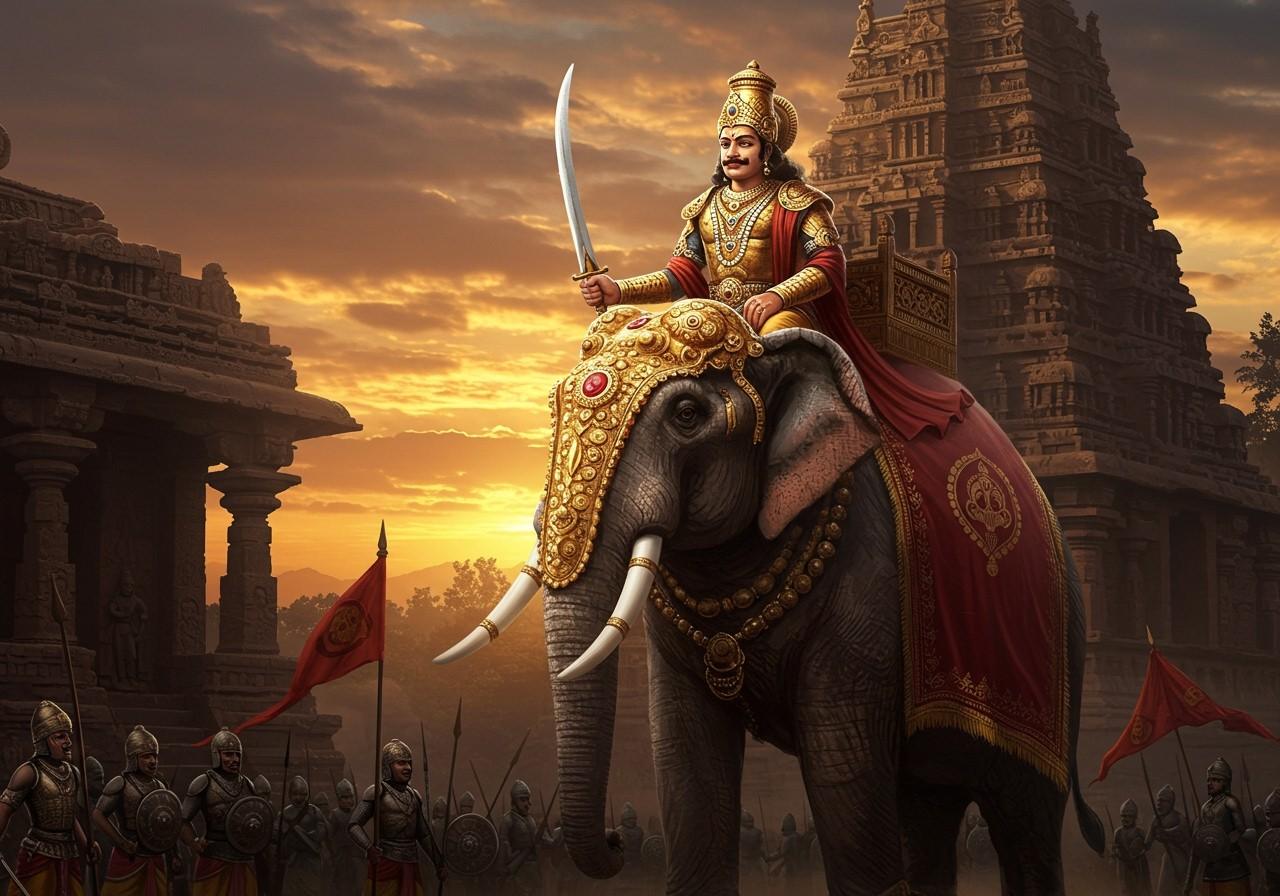
The Rashtrakuta dynasty, originating around the 2nd century BCE, etched its mark on Indian history through remarkable conquests and architectural marvels. Ruling parts of South India from the 8th to the 10th century CE, their reign witnessed notable rulers like Dhruva Dharavarsha, whose military campaigns expanded their territory into northern India, leading to conflicts with the Pratihara and Pala dynasties. Initially a subordinate state under the Chalukya Empire, the Rashtrakutas rose to prominence through political acumen and military prowess. The dynasty’s decline began with the attack by Paramara King Siyaka Harsha in 972 CE, which severely damaged their capital and reputation. This blog delves into the key figures of this dynasty, their significant victories, and the lasting legacy they left behind.
The Rise and Expansion of the Rashtrakuta Empire
Emerging from the shadows of the Chalukya Empire, the Rashtrakutas established themselves as a dominant force in southern and central India. Their strategic control of key locations fueled their expansion, with their capital, Manyakheta, serving as a vital hub for administration and military planning.
Dantidurga: The Architect of Rashtrakuta Power
Dantidurga, the founder of the Rashtrakuta dynasty, spearheaded decisive battles against the Chalukyas, securing Rashtrakuta supremacy. His efforts consolidated their power and laid the groundwork for future expansion, leaving an indelible mark on the cultural and religious landscape of the time.
Krishna I: The Visionary Behind the Kailash Temple
Krishna I’s reign is synonymous with architectural magnificence, most notably the awe-inspiring Kailash Temple at Ellora. This rock-cut marvel stands as a testament to Rashtrakuta artistry and architectural ingenuity, a symbol of their political and cultural influence.
Dhruva Dharavarsha: The Conqueror of Kannauj
Dhruva Dharavarsha’s military prowess propelled the Rashtrakuta empire further, his conquest of Kannauj marking a significant victory against the Pratihara king Vatsaraja. This triumph solidified Rashtrakuta influence in northern Indian politics.
Govinda III: Extending Rashtrakuta Dominance
Govinda III’s victory over Dharmapala of the Pala dynasty underscored Rashtrakuta dominance in northern India. His military campaigns extended to the Cholas and other southern kingdoms, demonstrating his strategic brilliance and further consolidating the empire’s power.
Amoghavarsha I: The Patron of Arts and Literature
Amoghavarsha I, a scholar-king, championed the arts and literature alongside his military achievements. A contributor to Kannada literature, his administrative reforms streamlined the governance of the vast Rashtrakuta empire, while also navigating conflicts with the Cholas and Pallavas.
Indra III: Reinforcing Rashtrakuta Authority
Indra III’s victories against the Chalukyas reinforced Rashtrakuta authority and expanded their territories. His strategic acumen solidified their power and influence in the region.
Krishna III: The Last Great Rashtrakuta Ruler
Krishna III, the last prominent Rashtrakuta ruler, led military campaigns against the Cholas, facing increasing challenges towards the end of his reign. His death marked the beginning of the dynasty’s decline, paving the way for the rise of new powers.
The Enduring Legacy of the Rashtrakutas
The Rashtrakutas left an enduring legacy, contributing significantly to art, architecture, literature, and administration. Their achievements, from architectural wonders like the Kailash Temple to their military and political dominance, continue to resonate in contemporary Indian society.
Poojn.in: Connecting to Rashtrakuta Heritage
Poojn.in, India’s leading cultural goods and services store, offers a unique opportunity to connect with the rich heritage of the Rashtrakuta period. We offer a wide selection of authentic puja items and religious artifacts reminiscent of those used during the dynasty’s golden age. Our collection includes:
- Temple bells and ghanta: Similar to those found in Rashtrakuta temples, these bells evoke the sacred sounds of ancient rituals. Crafted with meticulous detail, they serve as a beautiful and resonant connection to the past.
- Copper and brass vessels: Essential for traditional ceremonies, these vessels carry the weight of tradition and are crafted with the same care and reverence as those used centuries ago.
- Traditional lamps (deepam): Crafted using time-honored techniques, these lamps illuminate not only your home but also the rich history of Rashtrakuta rituals.
- Sacred items for pujas: We offer a comprehensive selection of items necessary for performing pujas according to historical customs, allowing you to experience the spiritual practices of the Rashtrakuta era.
- 100% Original Tulsi Mala with Brass Radha Krishna Pendant: Embrace the spiritual legacy with this authentic Tulsi Mala. Crafted with care, it embodies the devotion and reverence central to the Rashtrakuta period’s religious practices.
- Tulsi Mala with Radha Locket (Set of 2): Deepen your connection to tradition with this set of Tulsi Malas. Handcrafted and imbued with spiritual significance, they represent the enduring legacy of faith and devotion.
At Poojn.in, we ensure the highest quality and historical authenticity of our products. Each item comes with detailed care instructions and information about its traditional significance. We offer convenient doorstep delivery across India, making it easy for you to incorporate these ancient traditions into your modern life. Explore our complete puja sets for a comprehensive experience of Rashtrakuta religious practices.
Explore our collection at Poojn.in and bring home a piece of history.
Frequently Asked Questions about the Rashtrakutas
Who built the Kailash Temple? King Krishna I commissioned the magnificent Kailash Temple at Ellora.
Which Rashtrakuta king triumphed over Dharmapala? Govinda III achieved a significant victory over Dharmapala of the Pala dynasty.
Which Rashtrakuta king clashed with the Cholas? Both Govinda III and Krishna III engaged in conflicts with the Cholas.
Who led the Rashtrakuta conquest of Kannauj? Dhruva Dharavarsha led the successful campaign to capture Kannauj.
Which Rashtrakuta ruler was known for defeating the Chalukyas? Several Rashtrakuta rulers, including Dantidurga and Indra III, achieved victories against the Chalukyas.
Kandariya Mahadeva Temple
Dharmaraya Swamy Temple


